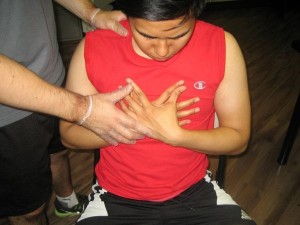Unstable angina is a condition wherein the heart does not get enough blood supply and consequentially, enough oxygen-rich blood. It does not follow a regular pattern, thus it may strike at any time of the day, and does not necessarily occur after a physical action. Unstable angina may occur more frequently and with greater intensity than stable angina that is not always relieved by medication or rest.It occurs more commonly in men than women.
Angina is chest pain or discomfort that results from insufficient amount of oxygen-rich blood received by the heart. Angina is not a diagnosis on its own, but rather, it is commonly a symptom of an underlying heart condition, such as coronary heart disease, the most common type of heart disease in adults.Unstable angina may be fatal and would require emergency medical assistant as soon as possible. It is suggestive of a myocardial infarction in the near future. Unstable angina is sometimes called acute coronary syndrome.
Causes of Unstable Angina
The heart needs a constant supple of oxygen as it is working all the time, thus when it does not get its sufficient amounts of blood, angina occurs. Usually, partial or total blockage of the heart’s blood vessels occurs due to the formation of blood clots or the rupture of plaques (fatty deposits) in the coronary arteries.The following are the other causes of unstable angina:
- Coronary artery disease
- Atherosclerosis
- Blood disorders that excessive blood clotting
Risk Factors for Unstable Angina
Certain medical or health conditions and certain lifestyle factors may increase a person’s chance of developing unstable angina. These risk factors include:
- Hypertension
- Diabetes
- High LDL cholesterol and low HDL cholesterol
- Family history of early coronary heart disease
- Lack of exercise
- Obesity
- Smoking
- Old age
Symptoms of Unstable Angina
Unlike stable angina, the symptoms of unstable angina may occur suddenly and may increase in intensity over time. The following are symptoms of unstable angina:
- Chest pain that may spread to the jaw, neck, shoulder, arm, back and other areas of the body that may las for 15-20 minutes
- Discomfort that feels like a tightening, squeezing, crushing, burning, aching or choking and may occur during rest or while sleeping.
- May or may not be relieved by medications
- Dyspnea
- Sweating
- Weakness and fatigue
- Drop in blood pressure
First Aid Management for Unstable Angina
Treatment will usually involve medications, lifestyle changes and surgical

procedures. However, if one experiences unstable angina at any time, call for emergency medical services immediately, as unstable angina may be a symptom of a heart attack or a forthcoming angina. The following is generally recommended for cases of unstable angina:
- Assist the person into a comfortable position. Keep the person calm and reassure him/ her that help is on the way. Do not leave the person alone.
- If the person has medication for angina with them, assist them in taking the medication.
- Check and monitor the person’s vital signs. If necessary, commence CPR.
Assisting a person experiencing stable angina is necessary. Understanding unstable angina and its symptoms can be a very helpful when taking First Aid Training and CPR Courses, as it is a common symptom for many medical emergencies.
Source:
Unstable angina.(2012). National Institutes of Health. Retrieved on October 6, 2013, from http://www.nlm.nih.gov/medlineplus/ency/article/000201.htm